Laser processing modes define how the images will be processed.
Luban supports several processing modes for graphics, to select a processing mode for graphics, select the graphics, and click a mode on the configuration bar.
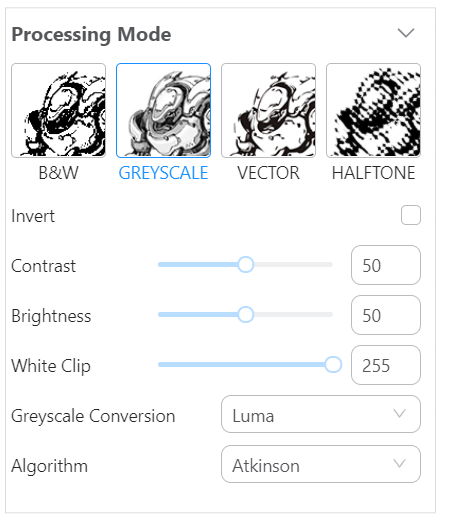
Laser processing modes and toolpath settings together determine the laser outcome: The processing modes define how the images will be processed, while the toolpath settings determine the specific movement of the laser, refer to - Laser Toolpath Settings in Luban.
To get an image for processing, please refer to: - Prepare an image for laser work.
Here is a table showing the available processing modes of different file formats.

Here comes the detailed explanation for the four processing modes in Luban:
¶ B&W
"B" represents black, while "W" represents white.
In this mode, Luban converts the graphics into black and white.
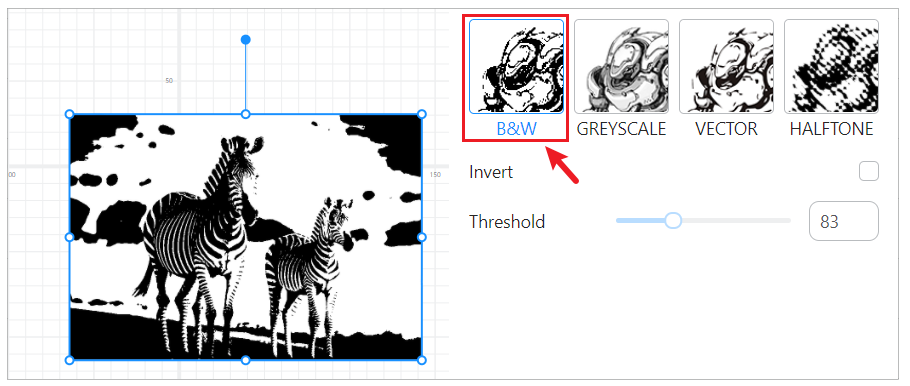
¶ - Invert
Inverts the color of images, white becomes black, and black becomes white.
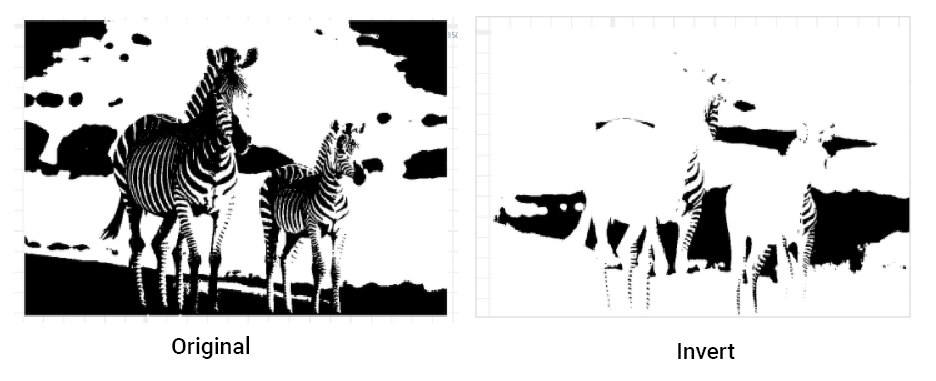
¶ - Threshold
Set the proportion of the black pixels. Colors above this value will be rendered in white.

¶ Greyscale
Converts the graphics into grey monochrome, composed exclusively of shades of grey. Each pixel in greyscale carries an amount of light, ranging from 0 as the weakest amount of light, or dark, to 255 as the strongest amount of light, or white.
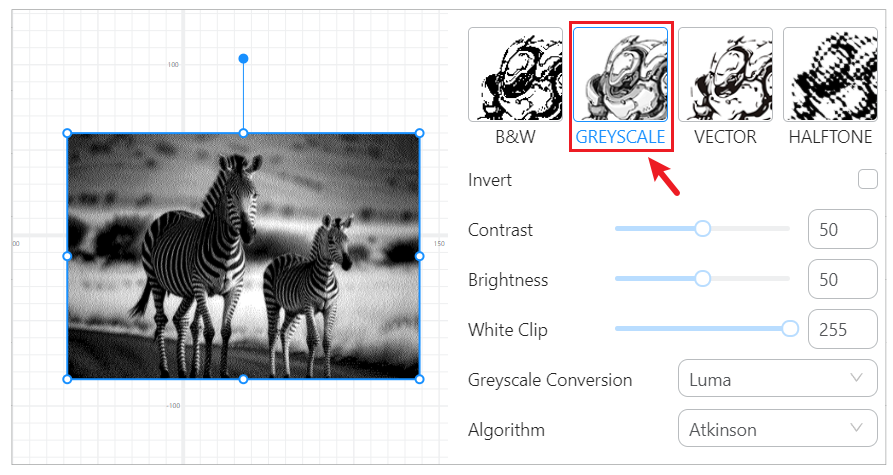
When you select the Greyscale mode, you can customize Invert, Contrast, Brightness, White Clip, Greyscale Conversion and select the algorithm for your design.
¶ - Invert
Inverts the color of images, white becomes black, and black becomes white.
¶ - Contrast
Set the disparity between darkness and brightness. The bigger the value is, the more obvious the contrast will be.

¶ - Brightness
Set the brightness of the image. The bigger the value is, the brighter the image will be.

¶ - White Clip
Set the threshold to turn the color that is not pure white into pure white. Colors above this value will be rendered into pure white.

This is used mainly to avoid engraving areas we don’t need in the image.
¶ - Greyscale Conversion
The purpose of grayscale conversion is to convert color images to grayscale. Different grayscale conversions will result in different effects based on the algorithm that you selected.
Luban supports three algorithms for greyscale conversion: Luma, Luminance and Luster.
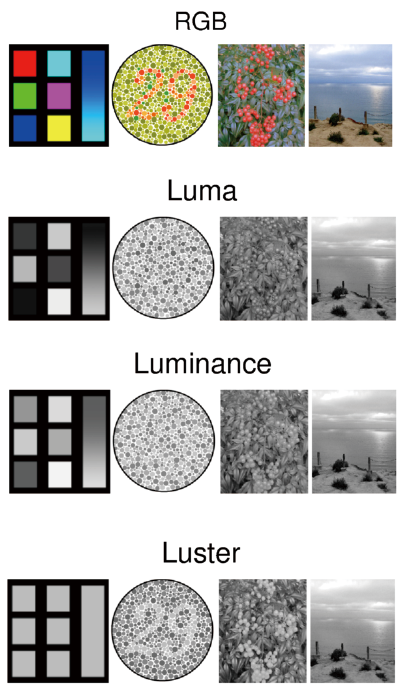
¶ - Algorithm
The Algorithm option determines the way it changes the image into the tool path. It's a setting that can be tweaked to get some slightly different variations in the processed grayscale image. It basically alters the way the computer sees and processes the black and white pixels in the image, their arrangement, and their density relative to each other. There are nine algorithms in tatal: None, Floyd-Steinburg, Jarvis-Judice-Ninke, Stucki, Atkinson, Burkes, Sierra-2, Sierra-3 and Sierra Lite. The Atkinson is generally the standard one and it often best fits most types of images.
When you choose None here and select Variable Line in Toolpath settings, you can activate None Dithering effect. When you select other algorithms rather than None, you can have Dithering effect.
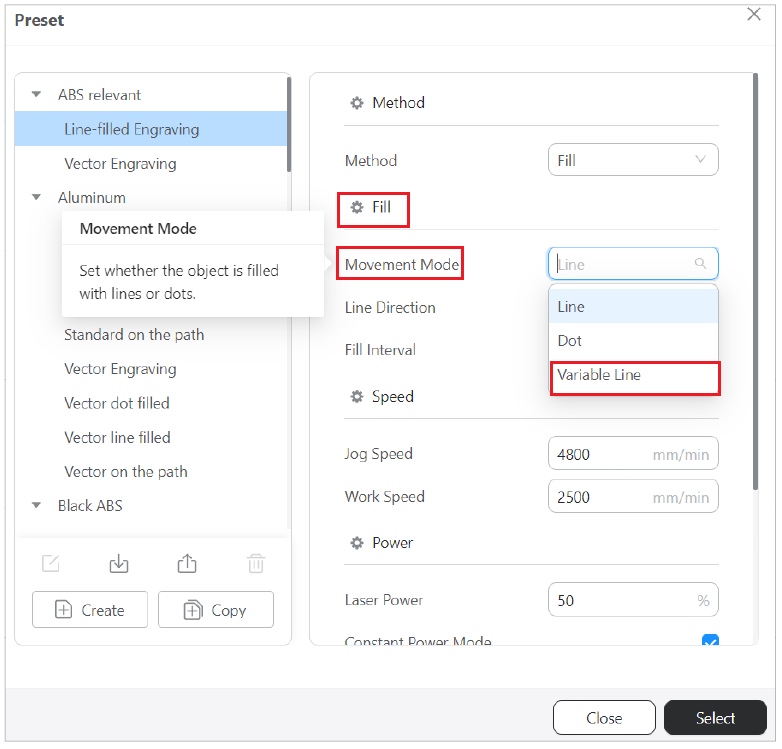
(1) Dithering Mode: The laser would create the image using dot patterns, which might result in a loss of fine detail and a more textured appearance.
(2) None Dithering Mode: The laser would use continuous tones, engraves solid areas based on the image's brightness, which provides a more precise representation of the original image.
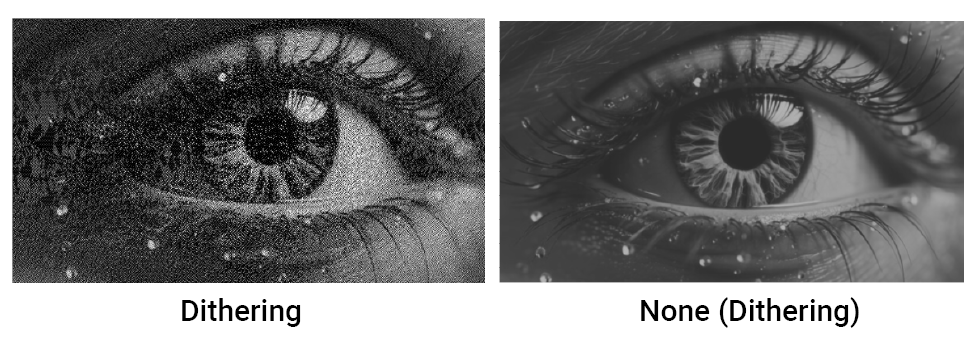
None Dithering is usually more difficult to use and only performs better than Dithering under specific circumstances.
The effect of other algorithm are listed as follows:
¶ - Floyd-Steinburg
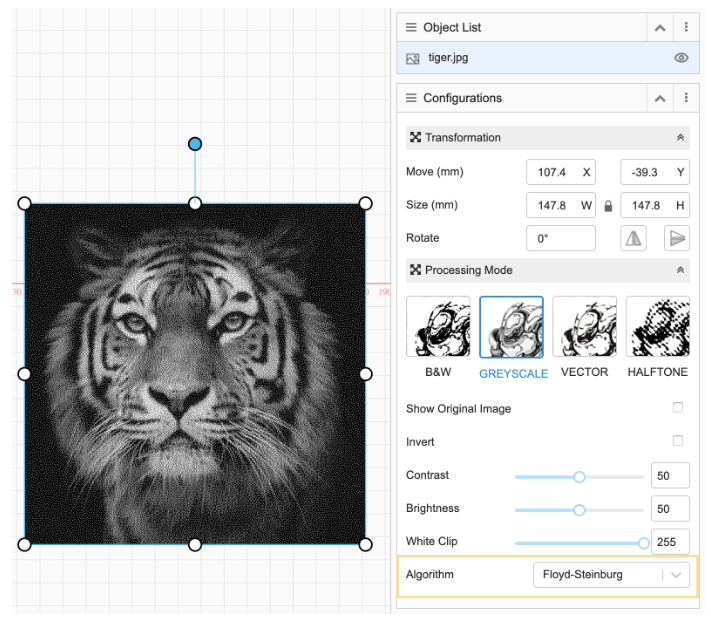
¶ - Jarvis-Judice-Ninke
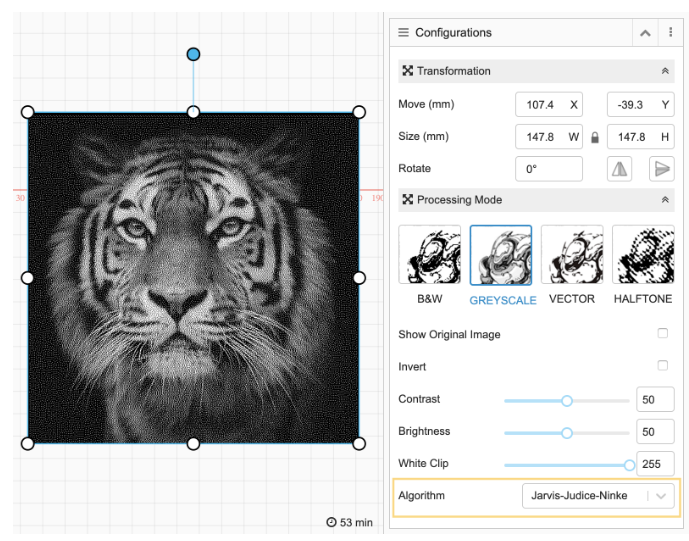
¶ - Stucki
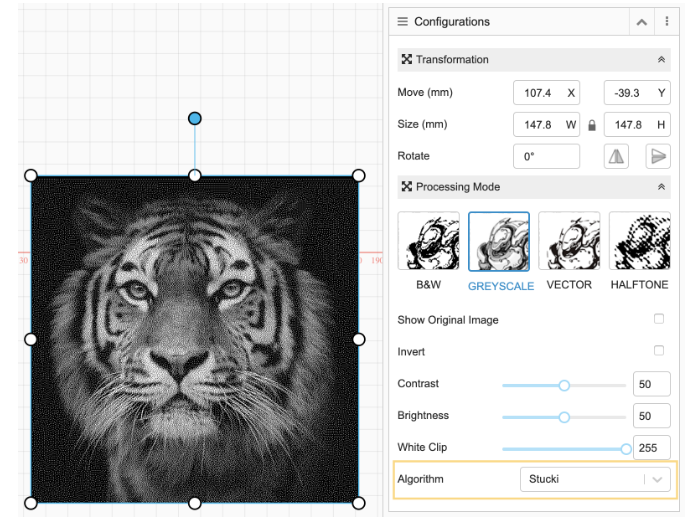
¶ - Atkinson
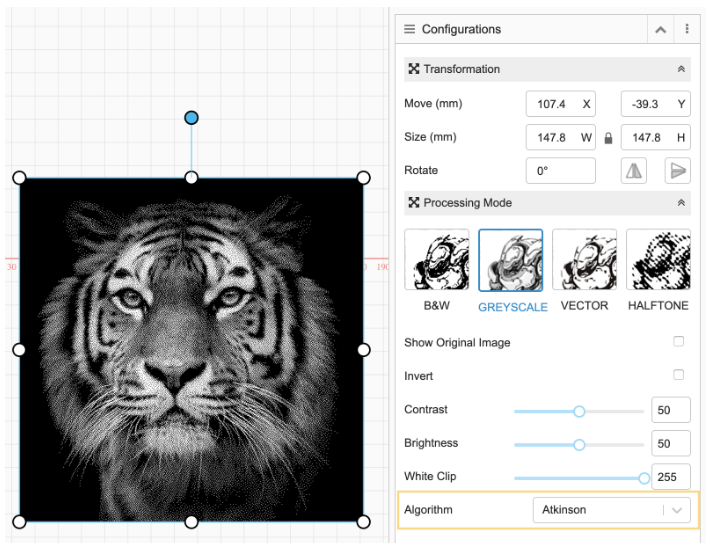
¶ - Burkes
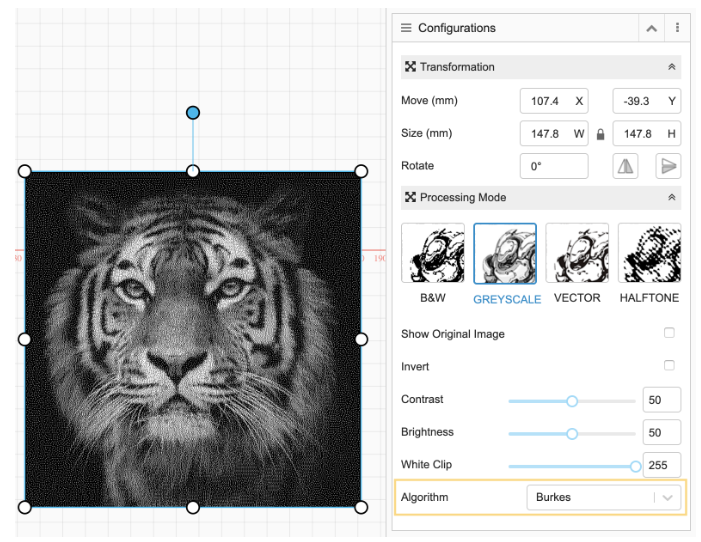
¶ - Sierra-2
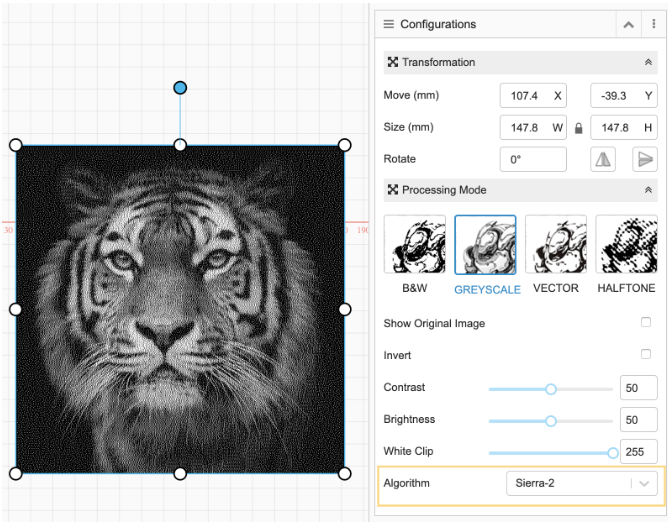
¶ - Sierra-3
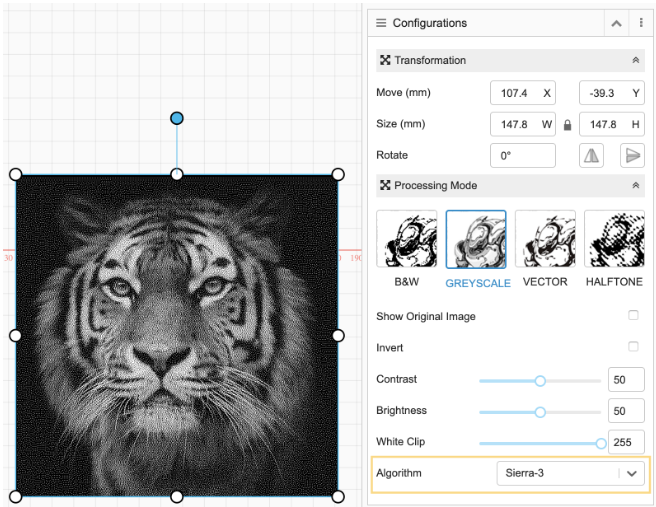
¶ - Sierra Lite
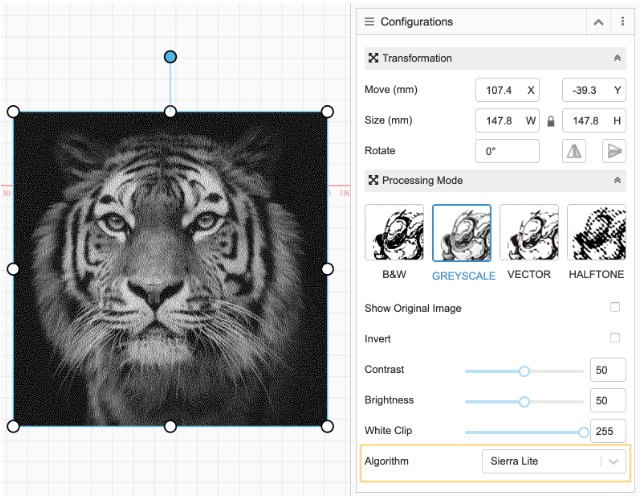
For more details about the effect of each Algorithm, please refer to this Wikipedia page: - Effects of different algorithms.
¶ Vector
Converts the graphics into vector graphics, composed of paths. The engraved image will be in black and white without any grey color.
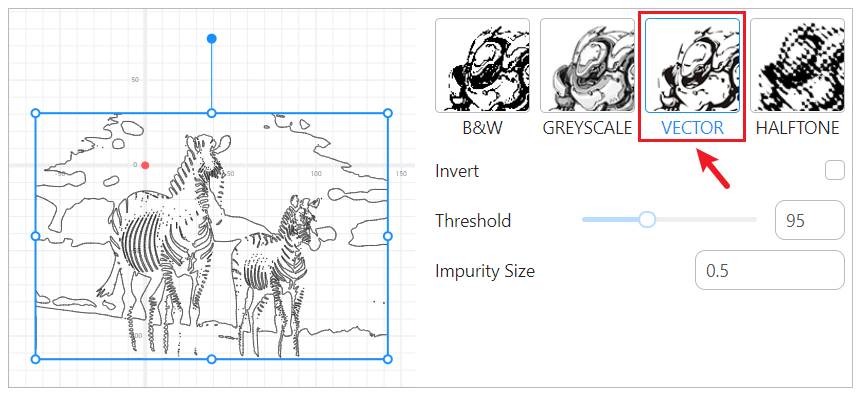
All built-in objects in Luban will be processed in the Vector mode.
¶ - Invert
Inverts the color of vector graphics, white becomes black, and black becomes white.
¶ - Threshold
Colors above this value will be rendered in white.
¶ - Impurity Size
Impurity Size is used to handle noise or small unwanted details in an image. By setting a threshold, the software can automatically filter out details smaller than the specified size.
Set the minimum size of impurities allowed to be shown.

¶ Halftone
Converts the graphics into a halftone effect, composed of dots varying either in size or spacing.
This effect simulates continuous-tone imagery through the use of dots, varying in size or spacing, thus generating a gradient-like effect.
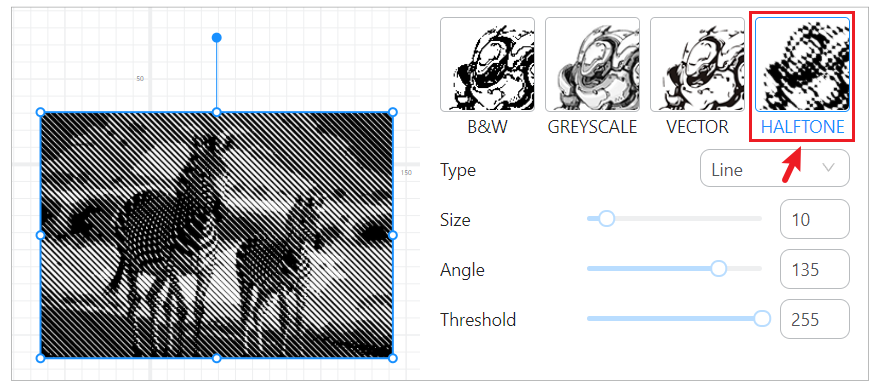
¶ - Type

- Line
Dots are arranged into lines. - Round
Dots are arranged into rounds. - Diamond
Dots are arranged into diamonds.
¶ - Size
Set the size of dots.
¶ - Angle
Set the rotation angle of the halftone image through the arrange of dots.
¶ - Threshold
Set the proportion of the black pixels. Colors above this value will be rendered in white.